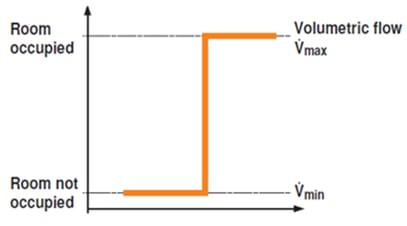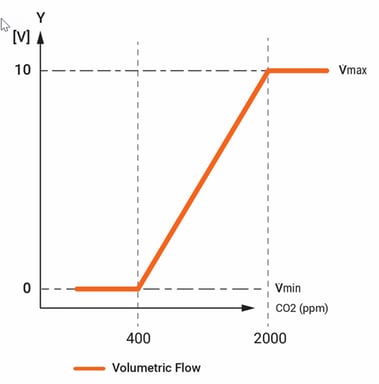Three Techniques to Provide Fresh Air to Your Space
The Covid-19 pandemic increased general awareness of the importance of fresh outdoor air delivered to occupied spaces. Zones that use Variable Air Volume (VAV) boxes for heating and cooling loads can also be used for ventilation. However, when using other zone control systems for temperature control, such as Variable Refrigerant Flow (VRF), another system must handle the ventilation requirements. The VAV Compact is a great way to ensure adequate fresh air reaches your zones.
The amount of outdoor air required for acceptable indoor air quality can be determined by using equation 6-1 in ASHRAE Guideline 62.1 2019, which states that Vbz = Rp x Pz + Ra x Az. In other words, the total volume of air required for the breathing zone is equal to the required air per person multiplied by the total number of people in the zone, plus the required air per square foot of the zone multiplied by the area of the zone.

For example, in a typical US High School, the outdoor air required for a 1024 ft2 classroom with 25 people would be 363 cfm.
One easy way to maintain an adequate volumetric flow is to use the VAV Compact in a Constant Air Volume Application. If you have an LMV-D3-MP, you can use NFC and the Belimo assistant app to set Vmin to 363 cfm (as in the example above). Regardless of the fan speed, or if there are any pressure fluctuations in the system, the VAV Compact will modulate the damper to maintain 363 cfm, even without a setpoint signal!

One might not want to send 363 cfm to the space 24/7, especially when the building or zone is unoccupied. In this scenario, one could consider adding an occupancy sensor to the zone and wiring the switch to the VAV Compact. Vmin can then be set to 0 cfm (or some other minimum threshold), and Vmax can be set to 363 cfm (as referenced above). When the room is occupied, the switch will be activated, and 363 cfm will be delivered as required. When the space is unoccupied, the switch is inactive, and the actuator will modulate to maintain Vmin.
Finally, it is possible for demand controlled ventilation using the VAV Compact coupled with a room unit such as the 22RTM-59-1. Using the Belimo Assistant App, set the CO2 range for the room unit anywhere between 0-2000 ppm. Outdoor air is typically 400 ppm, and for most applications, represents the lowest point you would want to set your scale to avoid excess ventilation. You can then wire the outputs from the room unit to the VAV Compact, and the VAV compact will modulate flow in direct proportion to the CO2 levels in the room. In this scenario, Vmax should be the amount of air that flows through the damper when it is fully open to ensure maximum ventilation at high CO2 levels.


These are three simple techniques to provide fresh air to your zones, particularly those that do not use air for heating and cooling. For more advanced sequences of operations, use these products in conjunction with external controllers that will send a precise airflow setpoint to the VAV Compact. The LMV-D3-MOD can also be integrated into your Building Management System and communicates via both BACnet MS/TP and Modbus RTU.

